Data lists
Main data type screen, toolbars, view settings… Using your application data types.
Main type view (full)
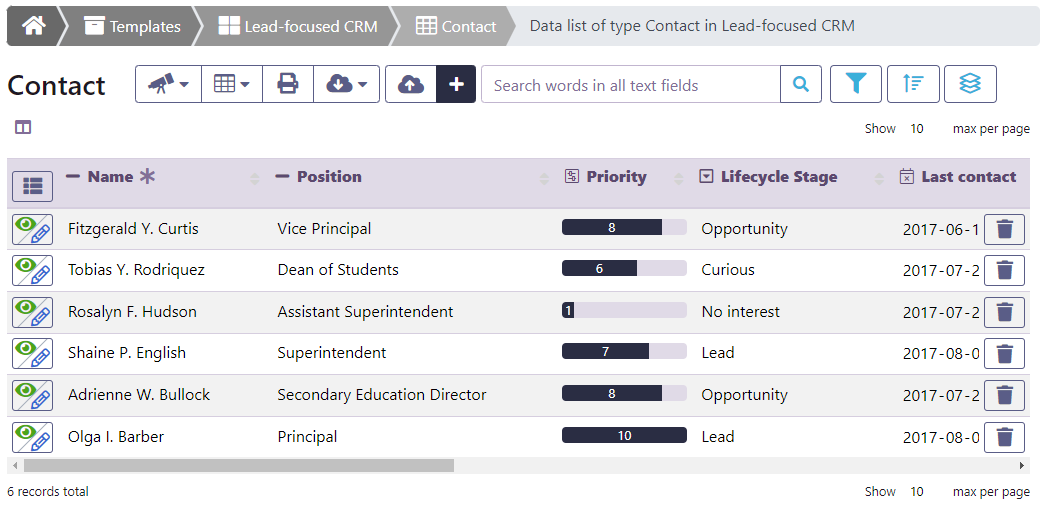
Toolbar
Perspective edition
The Perspectives button lets you manage perspectives.
Perspective are some times referred to as “Saved Search” as they are the mechanism in Simitless that lets you save a search to be able to call it again without having to compose all the data filters and settings.
Saved search and overridden settings for creating a custom view, a new perspective on your data.
Main type view (mobile)
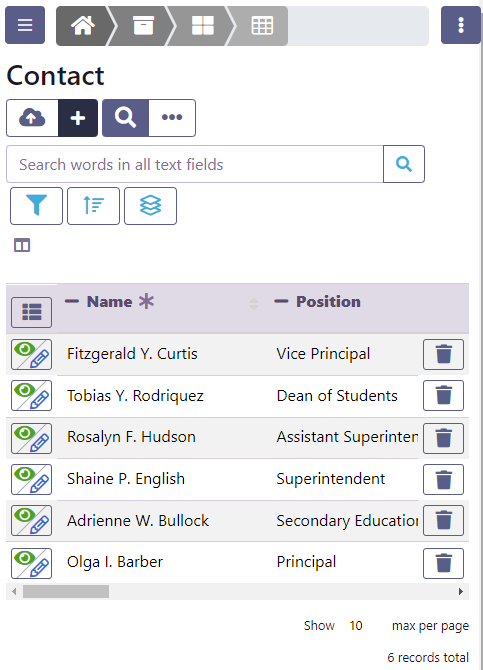
Data display type override
The Data display type override menu lets your change the way the data list is displayed. This button will list all of the compatible ways the data can be shown and you can pick the one you want. You can display a map as a list of positions in a table, or a gallery of images as a Kanban list with categories.
More on data object types, used in Data Display override…
Printing
The Printing button triggers the loading of additional layout instructions (CSS) for generating a printable page from the screen you are currently viewing. Your browser printing function is then triggered to let you send content to your printer.
Exporting data
The data export button lets you choose between two options to download the information in the CSV format:
- Download all: download all the data from all the pages (but still applying filters and sorting).
- Download this page: download only the data currently displayed in this page.
Importing data
The button navigates to the import page for the data type to add data from an external source (CSV) to your app.
Creating data button
The button creates a new record and opens it (unless the option not to open it is enabled).
Creating data records may trigger an error message if quotas are reached. The user will then be invited to request additional quotas and, if different from the current user, the billing user (app or workspace creator usually) will be asked to intervene to approve the change of billing plan.
Results
Columns
The icon opens a dropdown menu letting you select which columns to load and show in the table, or which fields to display in the other data display types. You can select both fields and meta data such as the Display Value for the record, the creation date and creation user, as well as the last modification date and the user that last modified it.
Text search field

Search by text
The input field with the search icon lets you input text that will be searched in the database indexes. The database index cover any field in your records that holds text. Simply, the indexes are built by pruning words to their base shape and listed in an index. The text search goes through the index to find records matching the text you input in that field. For that reason, the search often matches full words and not integral expressions or random succession of letters that don’t form a word. The text index service is provided by MongoDB, the underlying database to this part of the system: MongoDB indexes technical documentation available here.
Formal search filters
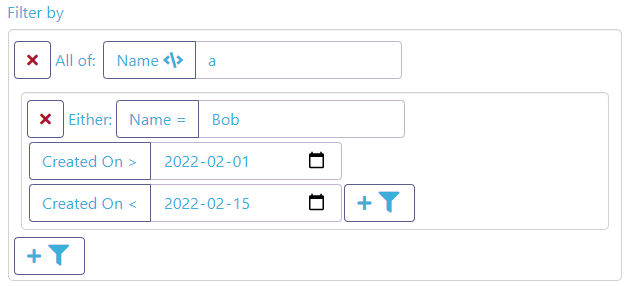
Search and Filters
The search and filter system in Simitless lets you assemble both simple and complex queries quickly. The filter button gives you access to adding filters. Filters can be added and removed to match what you need to exactly find.
Each type of field has its own search parameters, depending on its content. For example, text fields will have contain, starts with, ends with, all of which are searching using a regular expression to match partial content, and equal and different that are used to match exact content. For numbers or dates, you will be proposed the usual > < = ≠ ≥ ≤ operators.
Clicking on the All of or Either toggles the operator. These correspond to AND and OR operator in boolean search.
Sort
Formal search filters

The button enables you to define your prefered data record sorting order. The sorting can cumulate multiple columns. The second column is used to sort records whose fist value are the same. By default the sort order is by the last modification date, in descending order (most recent first).
Different data fields will propose different sorting orders. Dates will propose old to new and new to old when numbers will propose 1-9 or 9-1 and texts will propose A-Z and Z-A. Clicking on the sort order button toggles the order.
Group by category example
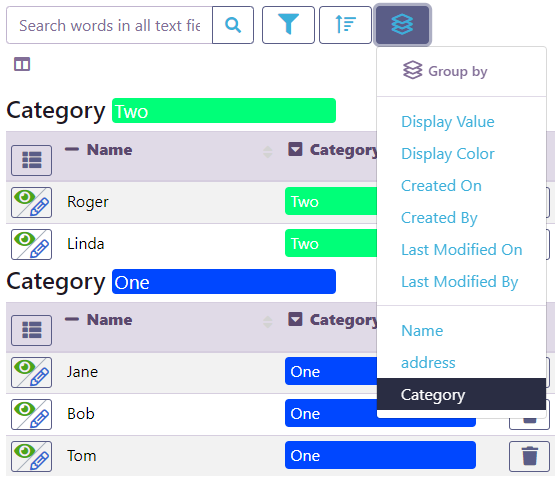
Group
The group button lets you define one or more fields to use to group records. For example, in the case of tables, grouped by a category field, the display would include one table for each category. The records are then displayed in the tables.
Tree navigation data type menu
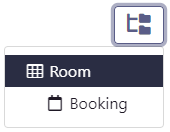
Navigation
Data tree
The data tree navigation button provides a menu letting you navigate to the sub-types listings. These are also available in the main app menu. If you wish so, the data type settings has an option to hide this button in the Data Listing Display settings.